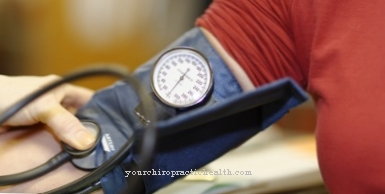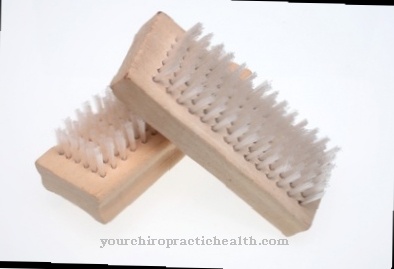A Plethysmograph is a device used in medicine to measure volume fluctuations. Depending on the type of plethysmography, it can calculate the volume of blood vessels in the arms and legs, the lungs, or the fingers. This method is also suitable for determining the finger volume (pulse) and the degree of erection in men. In pulmonology in particular, the plethysmograph helps to gain knowledge about the individual patient that is usually not measurable with other methods.
What is a plethysmograph?
The plethysmograph measures fluctuations in volume in different parts of the body, with the examination focusing on one part of the body. The occlusion plethysmography, the air displacement plethysmography and the body plethysmography seem to represent the three most common forms of plethysmography.
To determine the volume, the plethysmograph determines the filling quantity of another displaced substance. This is usually air or water. Frequent areas of application are examinations of the lungs and body fat measurements.
Shapes, types & types
Plethysmographs can be divided into different types. The classification depends on which criterion is used as the characteristic for differentiation. A fundamental differentiation is possible, for example, on the basis of the medium whose displacement the plethysmograph records. In theory, many different substances are conceivable that can fulfill this function - in fact, however, it is primarily a matter of choosing between water and air. Accordingly, water plethysmographs measure the extent of displacement based on the amount of water and air plethysmographs determine the displaced air, for example from a sealed chamber in which the patient sits during the examination.
Another differentiation is possible based on the functions or areas of application. Occlusive plethysmography deals with the blood flow to arteries and veins and, under favorable conditions, can determine whether there is a narrowing or occlusion of the blood vessel. Doctors can perform this test on a patient's legs and / or arms.
Air displacement plethysmography, on the other hand, is primarily concerned with determining the body fat content of a person. This is generally considered to be an important indicator of health. In contrast to the mere determination of weight, a body fat measurement that is as accurate as possible allows better conclusions to be drawn with regard to possible health risks due to obesity or other clinically relevant conditions. Some people also refer to the measurement method of air displacement plethysmography as densitometry (density measurement).
A third form of volume measurement is body plethysmography. This is a method that is primarily used in pulmonology (pneumology). It can pursue various goals and lead to a better understanding of individual parameters such as breathing resistance, (total) lung volume or residual volume. The residual volume corresponds to the amount of air that is still absorbed in the two lungs after exhaling.
Other forms of plethysmography are rarer, such as penile plethysmography or phallometry, which can be used, for example, in the diagnosis of erectile disorders, or such as finger plethysmography, which can provide information about cardiovascular conditions.
Structure & functionality
In general, the way the plethysmograph works is based on a simple principle that has been known since ancient times. According to a historical anecdote, a Greek philosopher found the solution to a problem in the bathroom. He had been commissioned by the ruler to find out whether a crown was actually made of pure gold. As the philosopher sank into his hot tub, he watched his body displace the water. He consequently concluded that the displaced volume can be used to measure how large the volume of an object is. According to tradition, he threw himself naked and beaming with joy on the street to shout “Eureka!” (“I found it”) and thus celebrate his discovery.
A plethysmograph works on the same basic principle. Instead of measuring displaced water, in most cases the device uses the displaced air volume. Of course, modern plethysmographs are not bath tubs, but rather chambers in which the patient can sit. In a contemporary form, however, water plethysmography is still a serious option alongside air plethysmography.
With occlusion plethysmography, doctors can not only use one of the procedures described, but alternatively also use the determination of the volume using strain gauges. Usually they are mercury strain gauges. They are also widespread in architecture and construction, for example to be able to recognize material fluctuations and changes.
Medical & health benefits
The benefits of plethysmographs can be seen in various medical fields. For example, the body fat measurement enables an approximately accurate measurement of the body composition. The process thus represents an alternative to other processes that can turn out to be much more complex.
Pneumology, too, benefits particularly from the findings that it owes to the plethysmograph. Doctors can use it to determine, among other things, the lung and residual volume as well as the breathing resistance, which would otherwise be difficult to record precise data. This means that the plethysmograph can also play a role in the diagnosis and control of lung diseases such as COPD. COPD (Chronic Obstructive Pulmonary Disease) can take several forms, all of which are characterized by progressively deteriorated airflow.








.jpg)



















